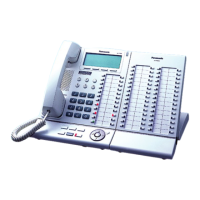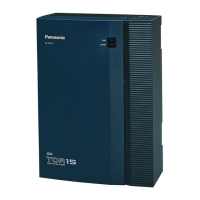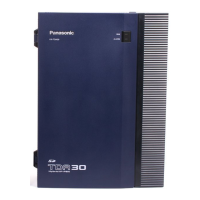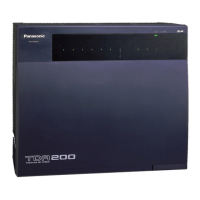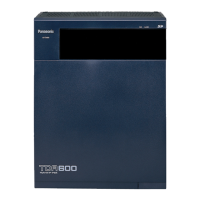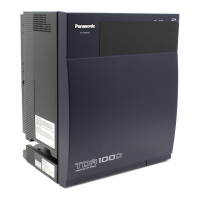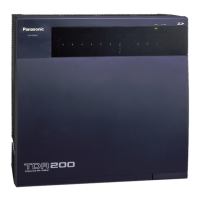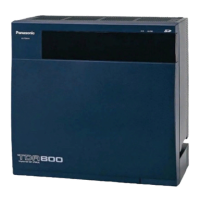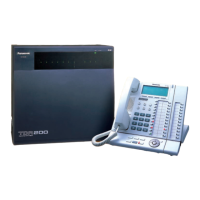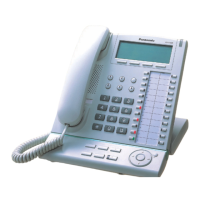ESVM2/ESVM4 Card
An ESVM card can be used either for the SVM feature, for the OGM feature (® 12.1.2 OGM (Outgoing
Message)), or both.
An ESVM4 card (4 channels) contains two separate blocks of data, and is the equivalent of installing two
ESVM2 cards. Up to four ESVM cards (max. 16 channels) can be installed on each shelf of the PBX.
Only up to 2 cards (max. 8 channels) can be used for the SVM feature per system. In this case, each card is
assigned a floating extension number in the same way as an SVM2 card. The rest of the channels must be
used for OGM feature purposes.
When using an ESVM card for the SVM feature, it must be mounted on sub-slot 3 (highest slot) of the OPB3
card.
[Example]
Message Box for
Extn. 101
Message Box for
Extn. 102
Message Box for
Extn. 301
Message Box for
Extn. 105
Message Box for
Extn. 104
Message Box for
Extn. 210
Message Box for
Extn. 103
SVM Card 1 (ESVM4): Floating Extension No. 591 (default)
SVM Card 2 (SVM2): Floating Extension No. 592 (default)
Block A
Block B
PBX
2 CH
2 CH
2 CH
Message Recording Limit
Up to 125 (SVM2)/250 (ESVM) messages (greeting messages and voice messages for extensions) with a
maximum
total recording time of 60 minutes (default) can be recorded per card/block. This memory is shared
between the message boxes of all extensions assigned to that card/block. The recording quality, which can
be selected through system programming, determines the total recording time as follows:
Recording Quality
Recording Time with the SVM2
Card
Recording Time with the ESVM2/
ESVM4 Card
High about 40 minutes about 20 minutes
Middle
(default)
about 60 minutes about 60 minutes
Low about 120 minutes about 120 minutes
When an ESVM
card is used for the OGM feature, the recording quality can be set separately (® 12.1.2 OGM
(Outgoing Message)).
Document Version 2010-11 Feature Manual 297
16.1.5 SVM (Simplified Voice Message)
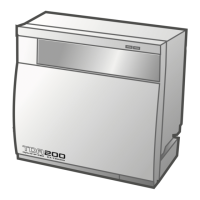
